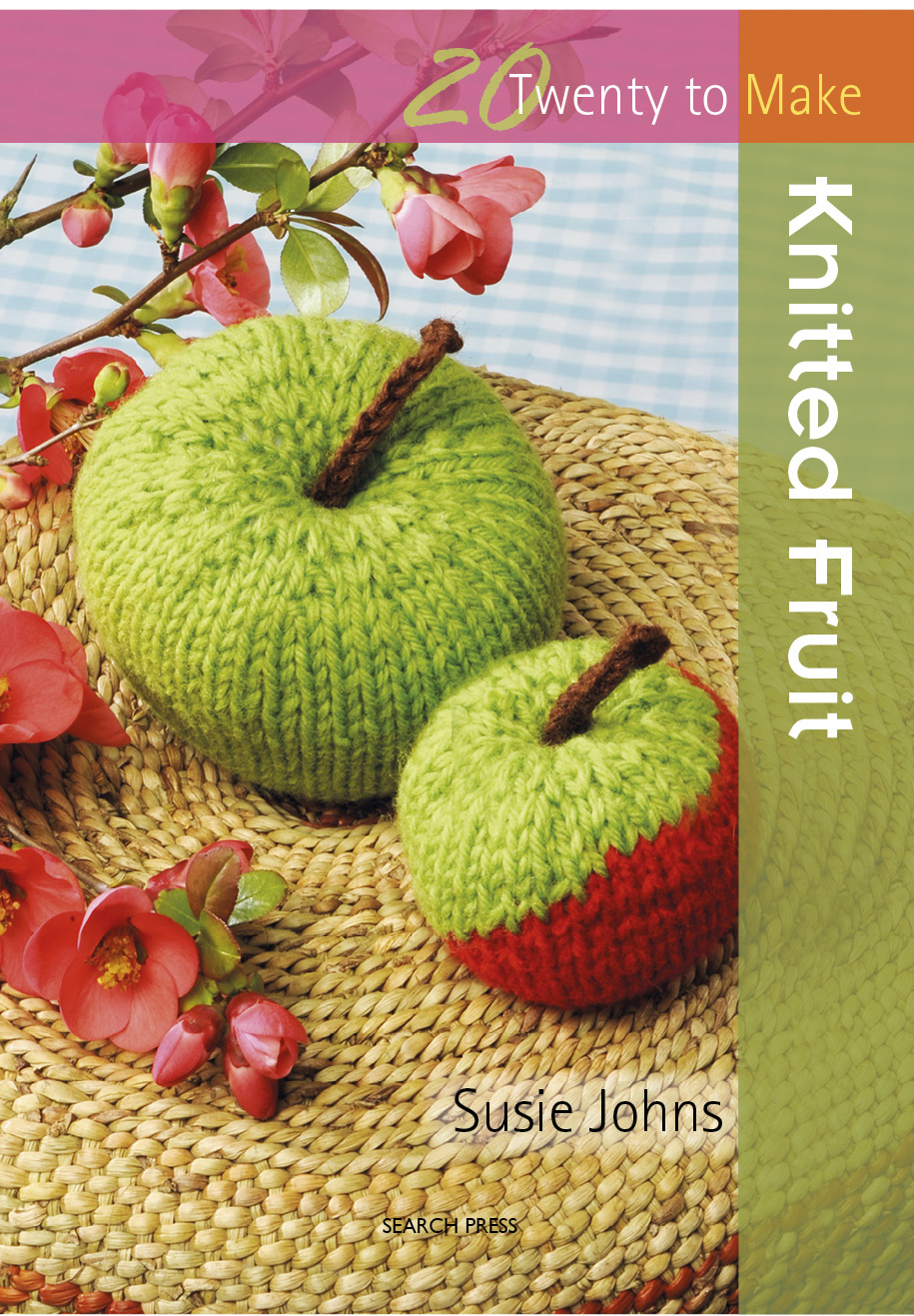
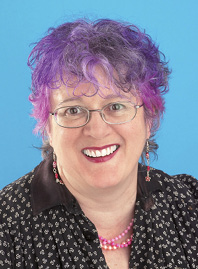
Susie Johns is an experienced crafter. She contributes regularly to a number of craft magazines and is the author of a range of books on practical subjects, such as collage, painting, drawing, papier mache, crochet, knitting and embroidery. She also teaches craft workshops.
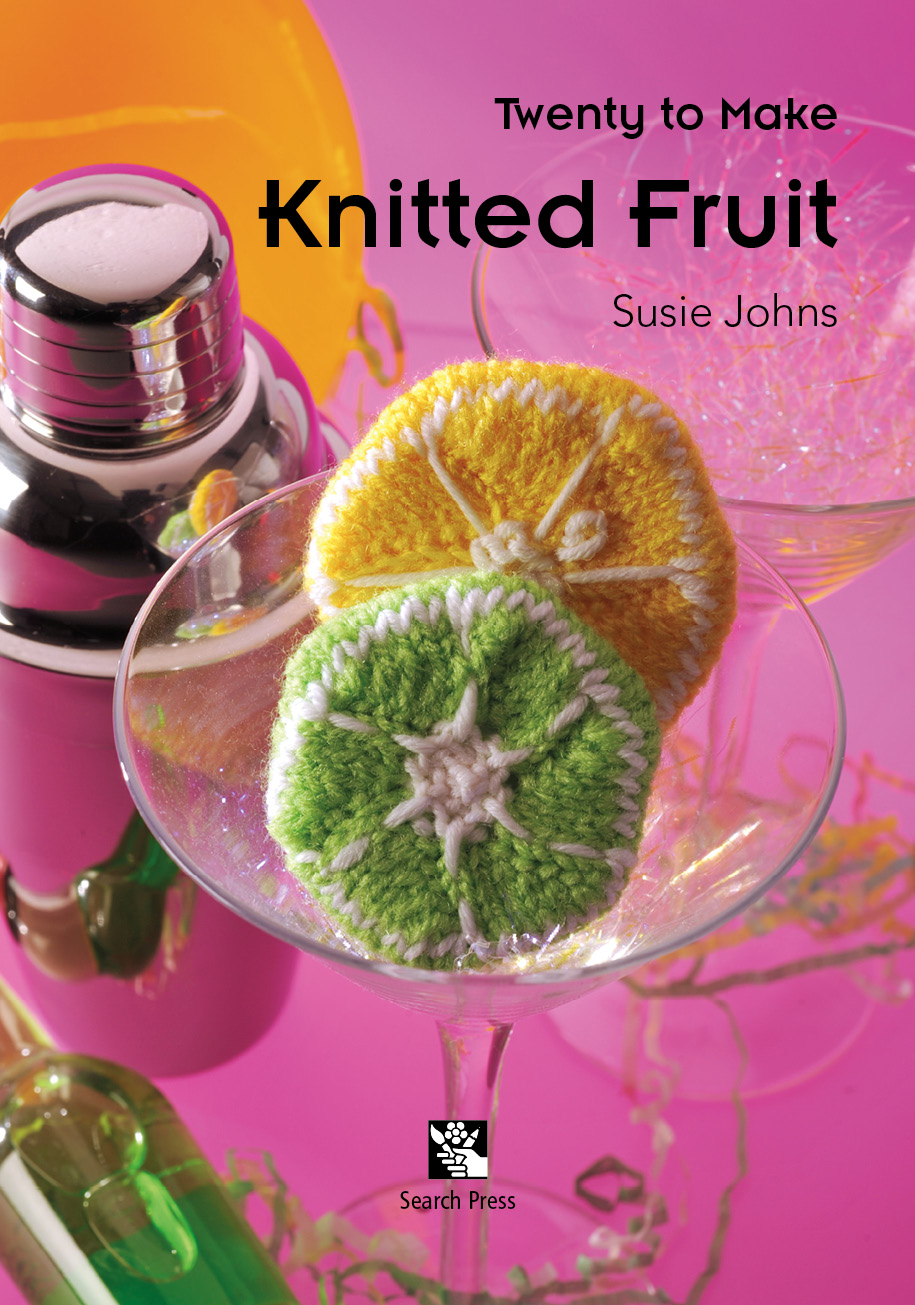
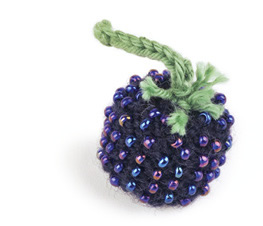
First published in Great Britain 2011 Search Press Limited
Wellwood, North Farm Road,
Tunbridge Wells, Kent TN2 3DR Text copyright Susie Johns 2011 Photographs by Debbie Patterson at Search Press Studios Photographs and design copyright Search Press Ltd 2011 All rights reserved. No part of this book, text, photographs or illustrations may be reproduced or transmitted in any form or by any means by print, photoprint, microfilm, microfiche, photocopier, internet or in any way known or as yet unknown, or stored in a retrieval system, without written permission obtained beforehand from Search Press. Print ISBN: 978-1-84448-540-6 EPUB ISBN: 978-1-78126-026-5 Kindle ISBN: 978-1-78126-081-4 PDF ISBN: 978-1-78126-135-4 The Publishers and author can accept no responsibility for any consequences arising from the information, advice or instructions given in this publication.
Readers are permitted to reproduce any of the items in this book for their personal use, or for the purposes of selling for charity, free of charge and without the prior permission of the Publishers. Any use of the items for commercial purposes is not permitted without the prior permission of the Publishers. Suppliers If you have difficulty in obtaining any of the materials and equipment mentioned in this book, then please visit the Search Press website for details of suppliers:
www.searchpress.com
| Dedication For my mother and grandmothers who, by teaching me how to knit and crochet, opened the door to a world of creative possibilities. |
| Abbreviations beg: begin(ning) dec: decrease (by working two stitches together) DK: double knitting g st: garter stitch (knit every row) inc: increase (by working into the front and back of the stitch) inc1: knit into front and back of same stitch inc 2: knit into front, back and front of stitch k: knit k2tog: knit two stitches together M1 : make one stitch p: purl psso: pass the slipped stitch over p2tog: purl two stitches together rib: ribbing (one stitch knit, one stitch purl) rem: remain(ing) rep: repeat(ing) sl1: slip one stitch on to the right-hand needle without knitting it st(s): stitch(es) st st: stocking stitch (one row knit, one row purl) tbl: through back loop yfwd: yarn forward yon: yarn over needle |
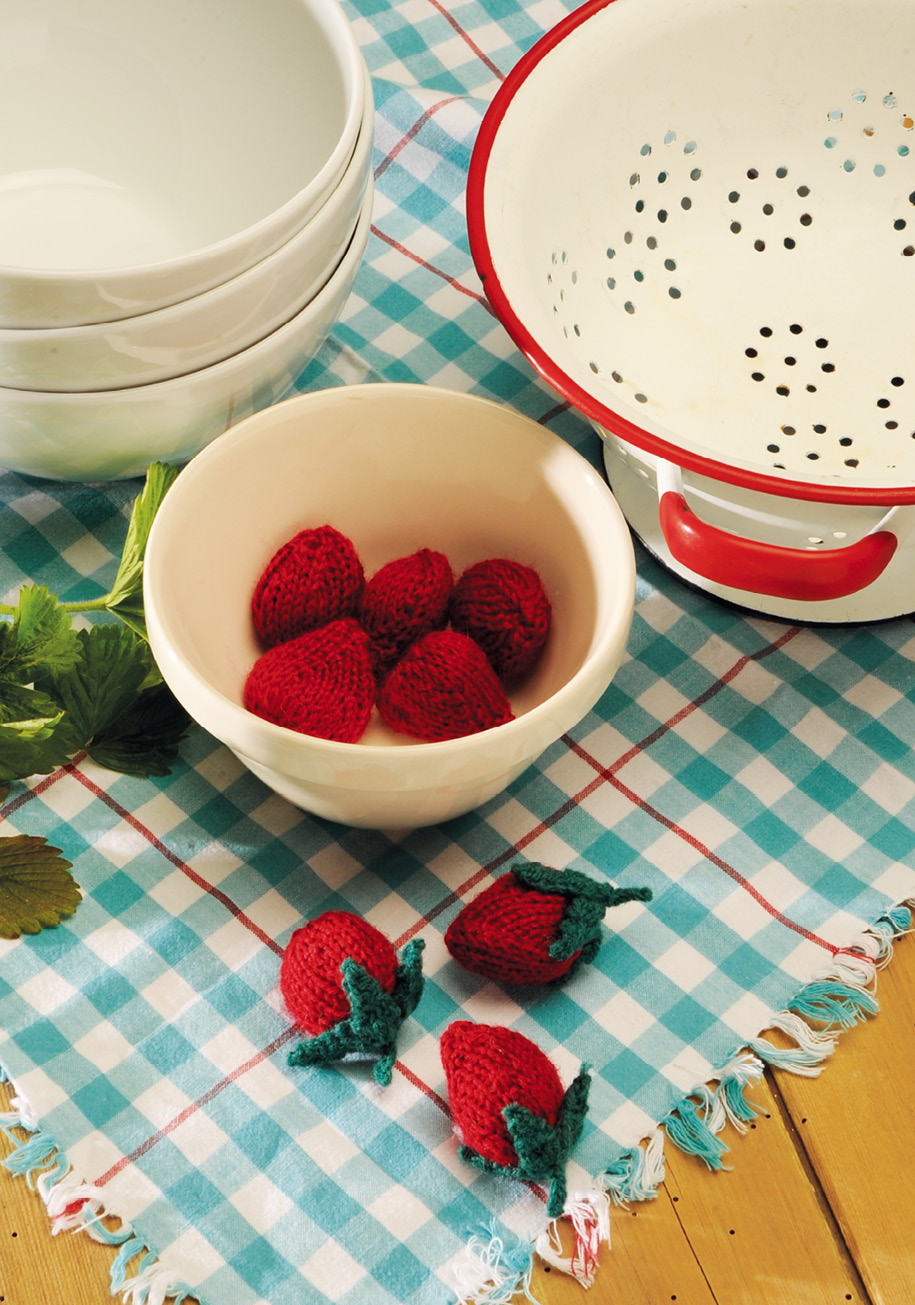
Contents
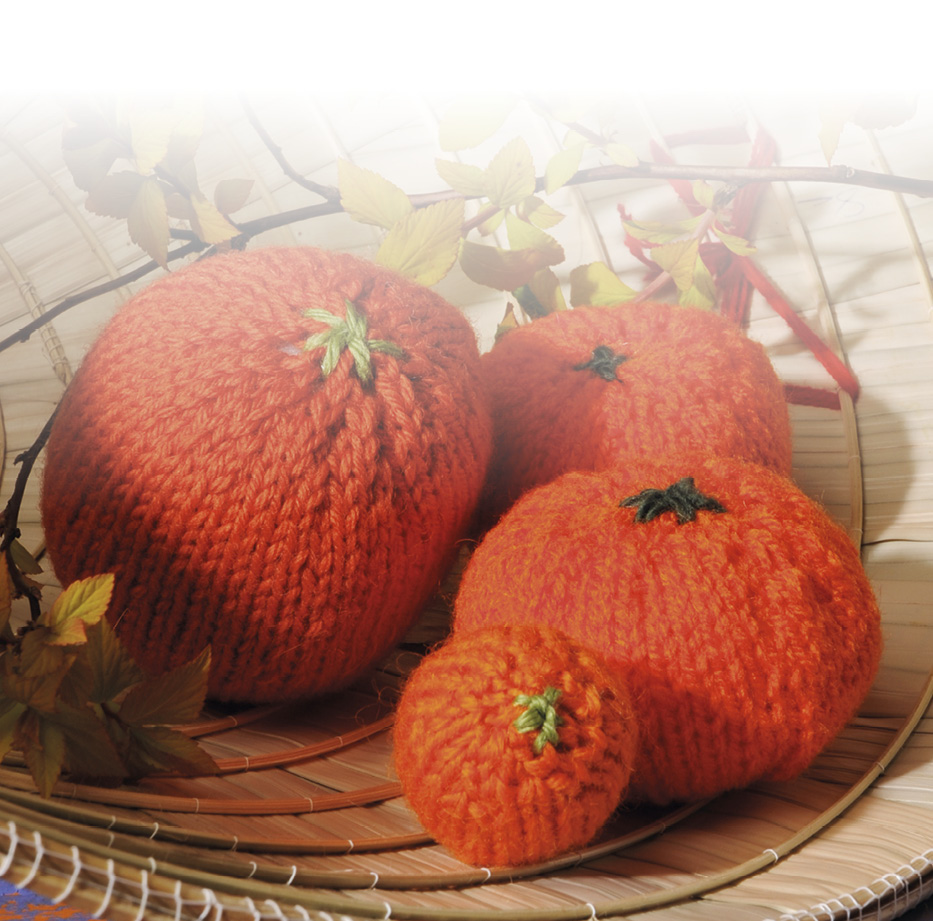
Introduction These knitted fruits some familiar, some quite exotic, depending on where in the world you come from are fun to make and a great way to use up oddments of yarn. Like all novelty knitted items, they make great gifts: a single fruit attached to a key ring, perhaps, or a selection arranged in a bowl or basket. They would also be ideal for children (apart from the blackberries, which include small beads) as long as you sew the components together very securely.
Most fruits tend to be round in shape and many of the patterns are designed to be knitted in the round on a set of four double-pointed needles. If this seems rather daunting, start with the simpler designs the banana and the rhubarb, for example before moving on to the round fruits. Because most of the projects are small, they are relatively quick to knit, though you should allow extra time for the making up and sewing in of yarn ends. Where round shapes are knitted on two needles, you will need to stitch edges together neatly and it is worth learning how to graft a seam as this produces the tidiest result. Fruit Basket With needles, yarn and basic knitting stitches, you can create a cornucopia of colourful fruits. 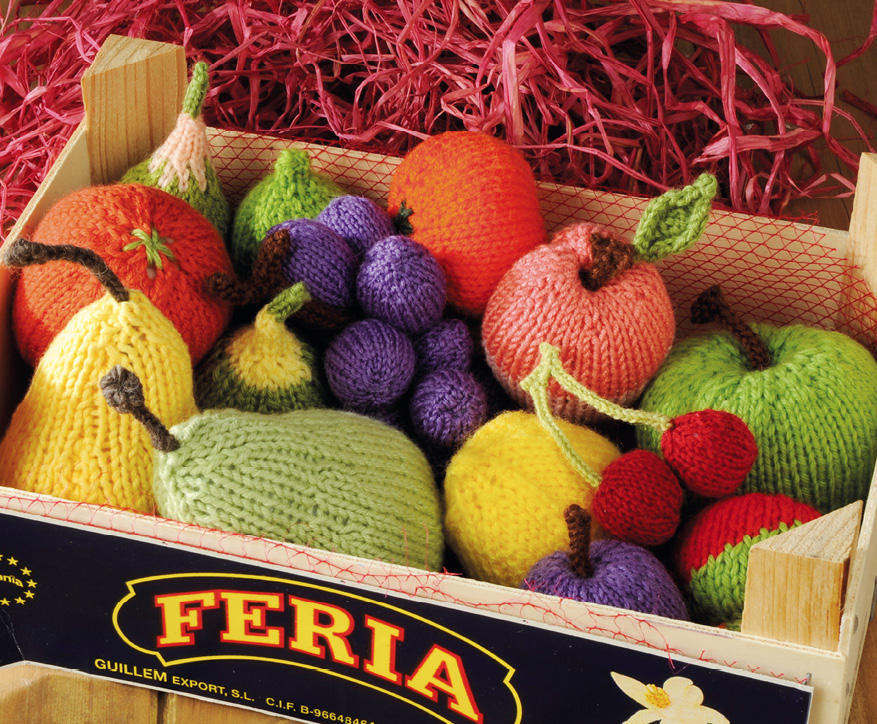
Materials and techniques Tensions (or gauges) for the projects are not given: just aim for a firm, close-knit fabric that will hold its shape and not allow the stuffing to poke through.
You will see that the needle sizes given in the patterns are smaller than you might expect. But you may decide to use a larger or smaller needle than the one stated in the pattern, depending on whether you are a tight or a loose knitter, to produce the desired effect. The projects are mostly made from double knitting (DK) yarn, though some of the smaller items use four-ply. As a general rule, I prefer to use natural fibres in my knitting projects, particularly pure wool, cashmere, cotton and silk but in some cases I have had to use acrylic yarns and various blends in order to source suitable fruity colours. The amounts given in the patterns assume that you are buying yarn and so are stated in balls but before you go shopping for yarns, experiment with any oddments you may already have. Search your yarn stash for shades of yellow, green, orange, red, plum, purple and peach, as well as some white and brown and you should have enough to make a start.
If you need to buy only a small amount of a certain colour, tapestry yarns are a good choice as they are sold in small skeins and are available in a wider choice of colours than most knitting yarns. 
| Knitting note Where the pattern states inc1, knit into the front and back of the stitch, thereby creating one extra stitch. Where the pattern states inc2, knit into the front, the back and the front again, thereby creating two extra stitches. |
| Knitting note When working with four double-pointed needles, if you find you are having trouble starting the patterns with only a few stitches, try knitting the first row on only two needles then distribute the stitches to the four needles and continue working. |

Pear Materials: 1 ball DK cotton yarn pale green Polyester fibrefill Tapestry needle Needles: Set of four 3.25mm (UK 10; US 3) double-pointed knitting needles
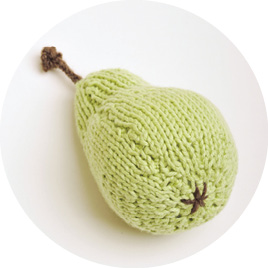
Instructions: Pear (make 1) With size 3.25mm (UK 10; US 3) double-pointed knitting needles and pale green yarn, cast on 12 sts and divide between three needles. Round 1: k.
Round 2: inc1 in each st [24 sts]. Round 3: k. Round 4: (inc1, k1) 12 times [36 sts]. Rounds 57: k. Round 8: (inc1, k2) 12 times [48 sts]. Rounds 920: k.


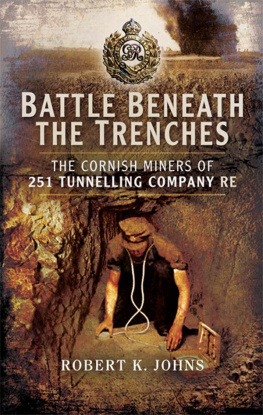


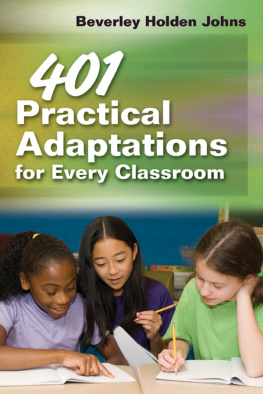
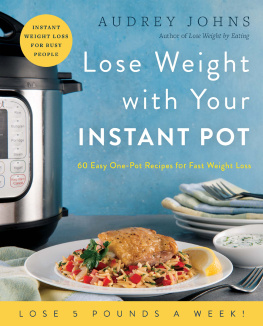
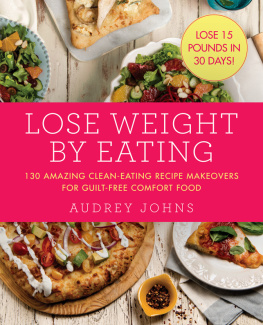
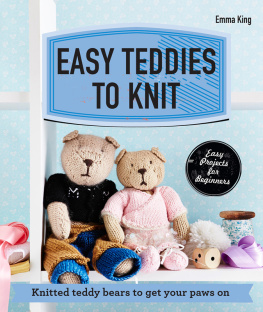

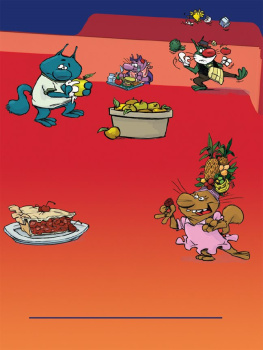
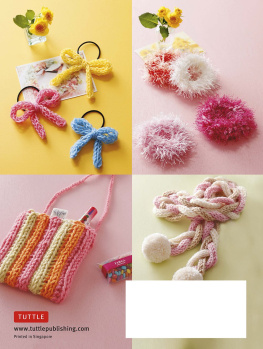
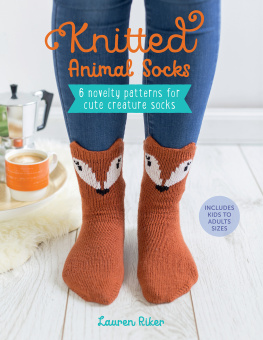
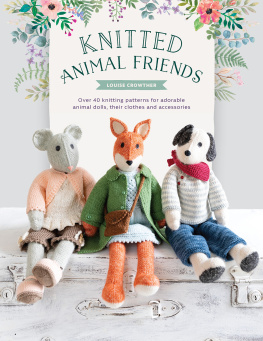

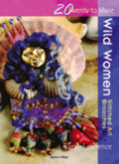
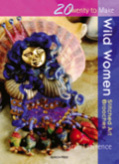
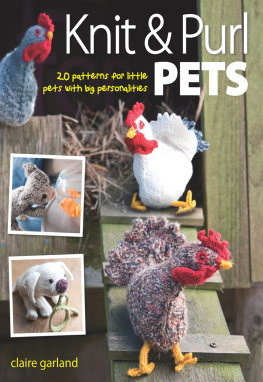
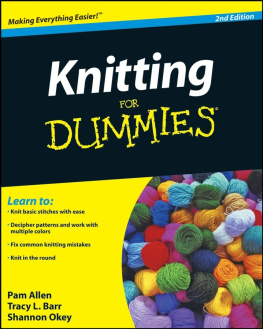
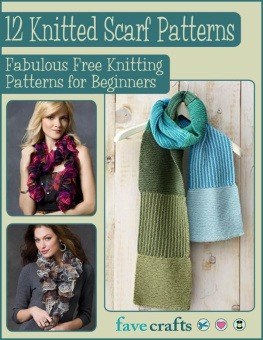

 Susie Johns is an experienced crafter. She contributes regularly to a number of craft magazines and is the author of a range of books on practical subjects, such as collage, painting, drawing, papier mache, crochet, knitting and embroidery. She also teaches craft workshops.
Susie Johns is an experienced crafter. She contributes regularly to a number of craft magazines and is the author of a range of books on practical subjects, such as collage, painting, drawing, papier mache, crochet, knitting and embroidery. She also teaches craft workshops. 
 First published in Great Britain 2011 Search Press Limited
First published in Great Britain 2011 Search Press Limited Contents
Contents 



 Instructions: Pear (make 1) With size 3.25mm (UK 10; US 3) double-pointed knitting needles and pale green yarn, cast on 12 sts and divide between three needles. Round 1: k.
Instructions: Pear (make 1) With size 3.25mm (UK 10; US 3) double-pointed knitting needles and pale green yarn, cast on 12 sts and divide between three needles. Round 1: k.